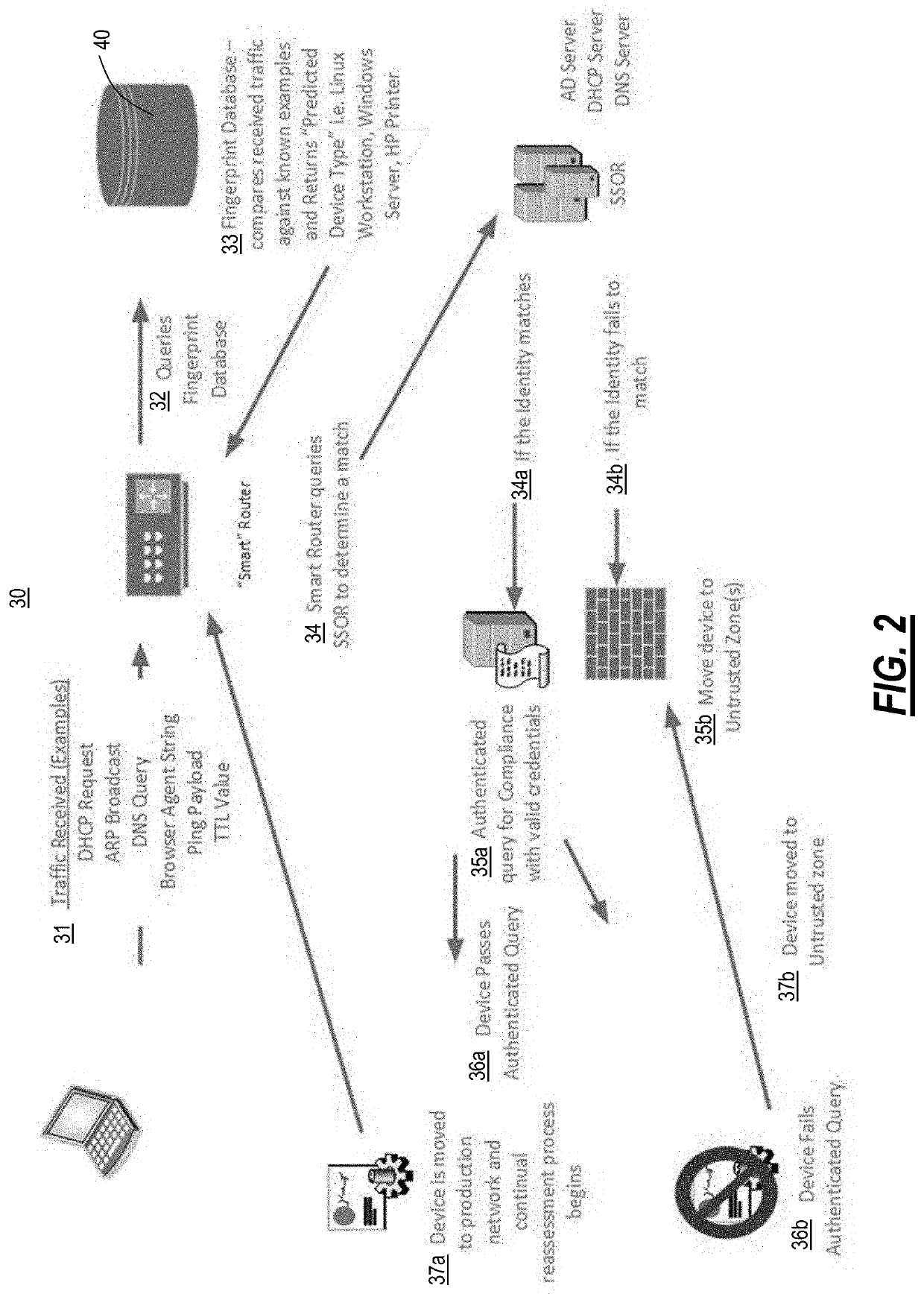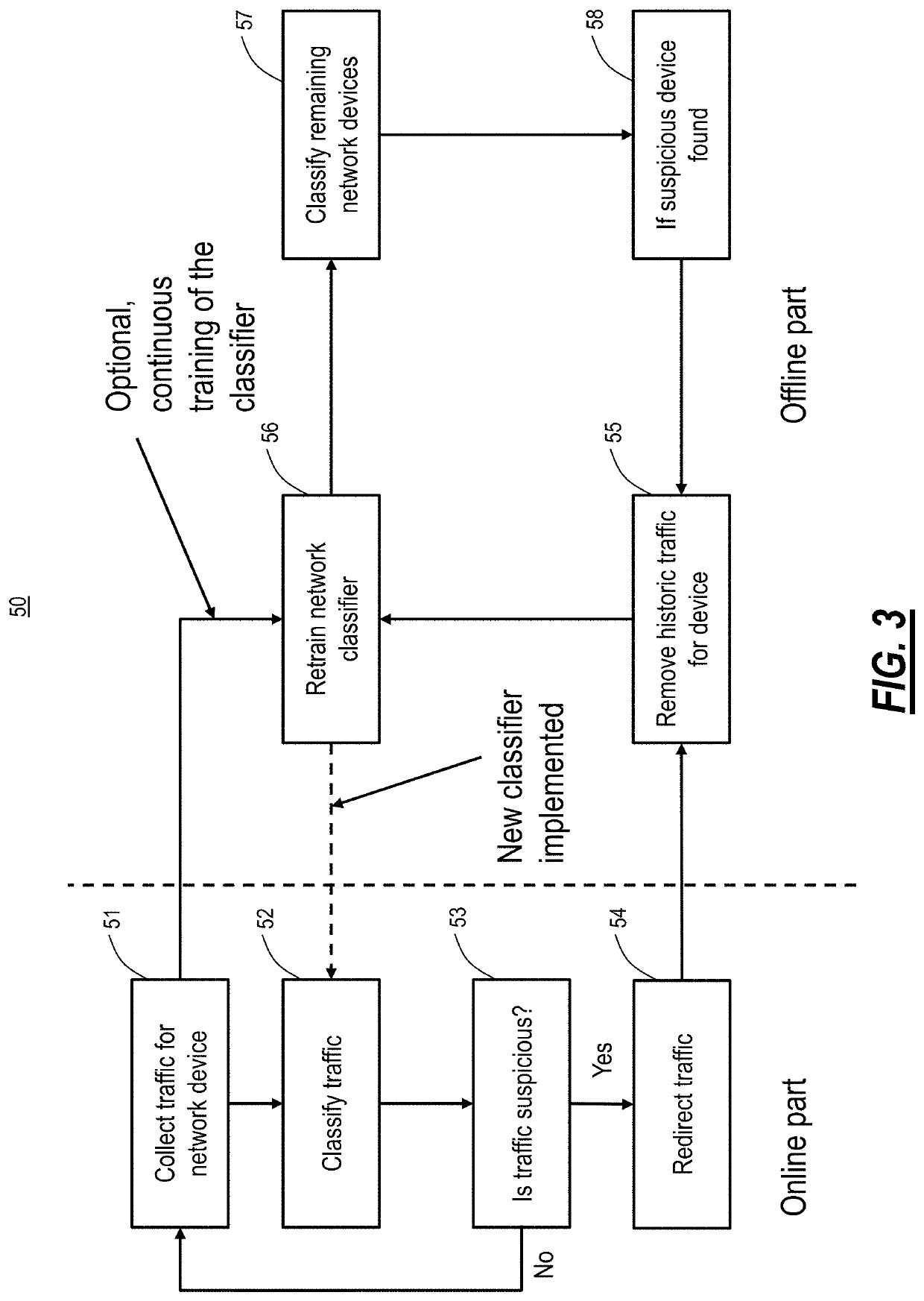Network architecture providing device identification and redirection using whitelisting traffic classification
a network architecture and traffic classification technology, applied in the field of network security, can solve the problems of increasing latency, agnostic infrastructure, and reducing availability of inspection processes
- Summary
- Abstract
- Description
- Claims
- Application Information
AI Technical Summary
Benefits of technology
Problems solved by technology
Method used
Image
Examples
Embodiment Construction
[0029]The present disclosure relates to a network architecture providing device identification and redirection using whitelisting traffic classification. The network architecture includes a network-wide mechanism that works on network switches at the edge and is fully automated through the use of machine learning. Specifically, the present disclosure is based on whitelisting devices as opposed to the conventional approach of blacklisting devices. Also, the present disclosure utilizes a one-class classifier which removes the need to provide threat profiles or a threat database for training. Other approaches are also contemplated, based on on supervised machine learning implemented with deep neural networks such as convolutional neural networks, recurrent neural networks, or long-short term memory networks and unsupervised machine learning implemented with deep neural networks, such as autoencoders and generalized adveserial networks.
[0030]The network architecture includes processes t...
PUM
 Login to View More
Login to View More Abstract
Description
Claims
Application Information
 Login to View More
Login to View More - R&D
- Intellectual Property
- Life Sciences
- Materials
- Tech Scout
- Unparalleled Data Quality
- Higher Quality Content
- 60% Fewer Hallucinations
Browse by: Latest US Patents, China's latest patents, Technical Efficacy Thesaurus, Application Domain, Technology Topic, Popular Technical Reports.
© 2025 PatSnap. All rights reserved.Legal|Privacy policy|Modern Slavery Act Transparency Statement|Sitemap|About US| Contact US: help@patsnap.com



